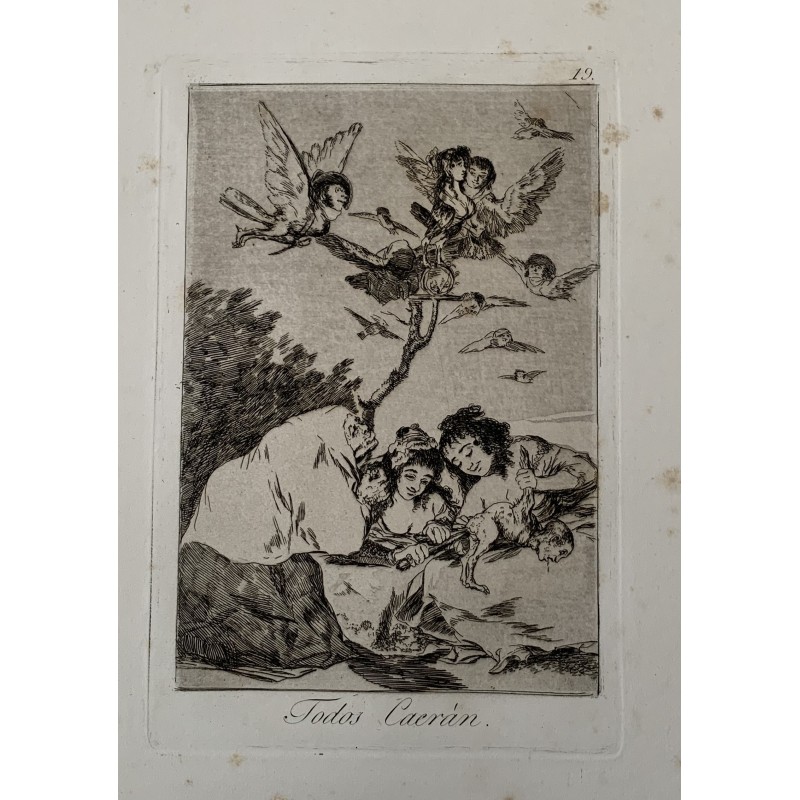Francisco de Goya y Lucientes. 'All will fall' ('Todos caeran'). Plate 19 from Los Caprichos. . 5th edition (1881-1886)
This fifth edition of Los Caprichos was printed between 1881 and 1886 in the Calcografía de la Real Academia, stamped in etching and aquatint and with drypoint, in soft sepia ink. The plates were beveled and the binding was done at the top of the prints. The edition consists of 210 copies. Very clean and correct tinted stamping; aquatint allows shadows to be nuanced by creating grayscale gradation and dramatic, haunting lighting. The strong paper used does not have a water mark as usual as Harris catalogs it. The original folder in which the complete collection was presented was made of cream cardboard with the portrait of Goya stamped on the cover and the Title: “Fran.co Goya y Lucientes Pintor”.
'Todos caeran' (Plate 19). An old woman whose head is covered with a cloak and who places her hands in front of her chest in a gesture of supplication, looks up where several birds with human heads flutter, some of which are resting on the trunk of a dry tree. One of them has been specially illuminated by Goya; It is about a woman with the body of a bird, with a generous bosom and adorned with ribbons that seem to serve as a claim. Along with the old woman, the painter has represented two other young women with abundant necklines that suggest their status as prostitutes. The one on the right side of the print is impaling one of the human-headed birds that can be seen at the top of the print..
Plate size: 15x21.5 cm.
Paper size: 26x37.8 cm.
Condition: foxing that can be seen in the image. Please scan carefully.
Los Caprichos (The Caprices) is a set of 80 prints in aquatint and etching created by the Spanish artist Francisco Goya in 1797-1798, and published as an album in 1799 (first edition). The prints were an artistic experiment: a medium for Goya's condemnation of the universal follies and foolishness in the Spanish society in which he lived.
Thirteen official editions are known: that of 1799, five in the 19th century, and seven in the 20th century. Being the last one in 1970 carried out by the Royal Academy of Fine Arts of San Fernando.


